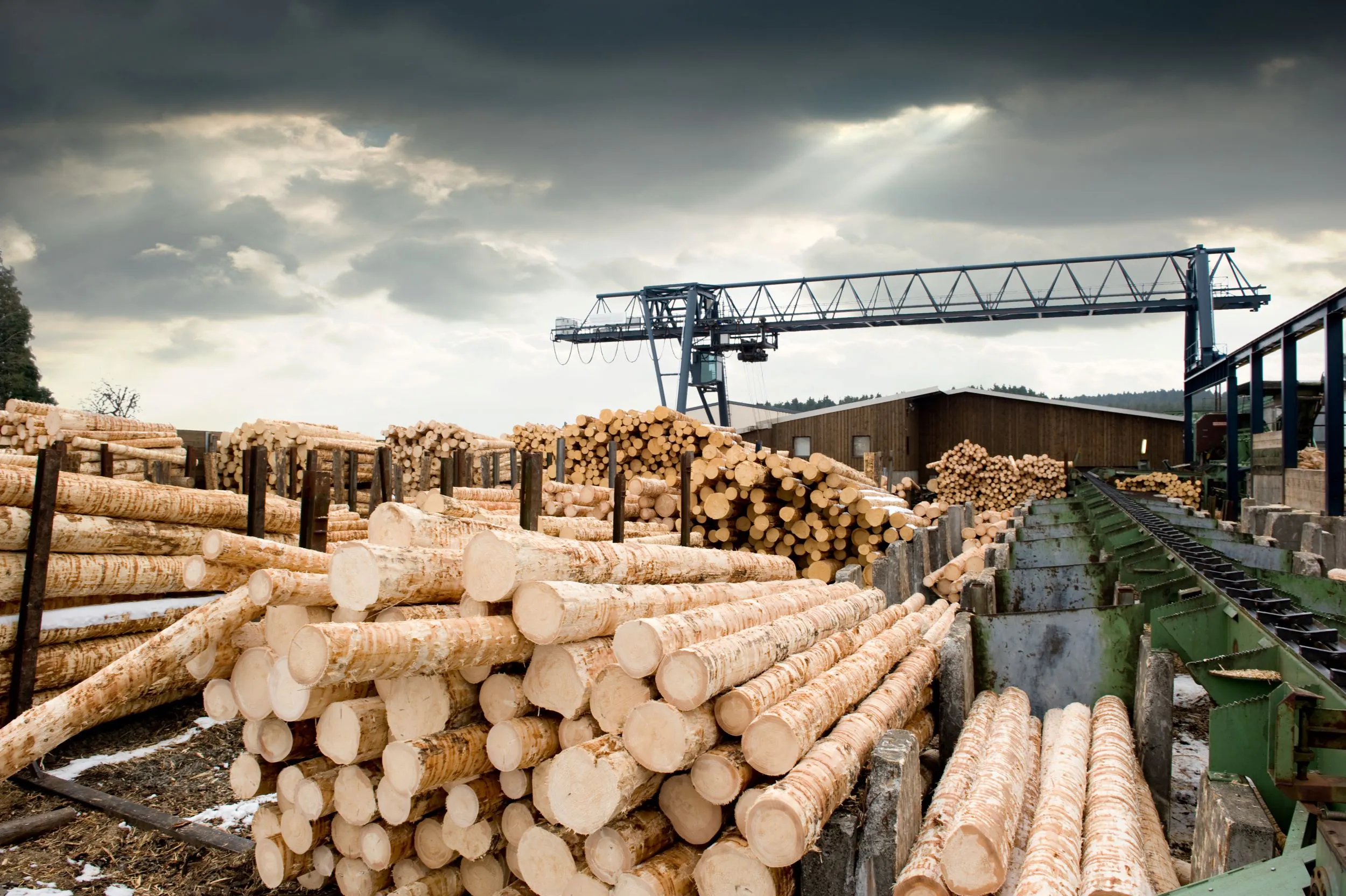The logging and sawmill industries are an essential part of North America’s economy, and Canada’s in particular. There is a wide breadth of uses for lumber and related wood products, particularly in construction but in many other industries as well, that keeps the material in high demand. But despite this demand — and in part because of it — the North American sawmill industry has been struggling over the past few years as it deals with the impact of the COVID-19 pandemic along with other challenges and setbacks.
Sawmill Industry Overview
Sawmills are the facilities that take raw tree trunks and convert them into usable wood materials such as dimensional lumber (beams, planks, boards, etc.), shingles, and siding, as well as byproducts like wood chips and sawdust. Their operations include scaling bark, cutting it down, drying, and smoothing the wood. Softwood makes up the bulk of lumber production as it is easy to work with and more affordable than hardwood. North America, with its high concentration of forested areas, is a key region for sawmills, as is Europe.
Canada is one of the world’s largest producers and exporters of softwood lumber, with 67% of softwood lumber production exported in 2020 and 84% of those exports going to the United States, which is only able to produce around 70% of its annual lumber demand. This means that American political decisions and economic changes have a significant effect on Canada’s sawmill industry, while changes to Canada’s lumber and sawmill industries can impact US industries that rely on softwood materials.
As dimensional lumber is a key material used in home construction, from framing and roofing to rebuilding and renovation, the North American sawmill industry is significantly impacted by the region’s housing markets. This means that the recent disruption in construction activities due to the pandemic, as well as changes to housing construction and purchasing, have caused demand fluctuations that sawmills are still struggling to adapt to. Government policies are also impacting the market, as the US seeks to boost local industries by using only American-made materials in federally funded infrastructure projects, potentially reducing demand for Canadian lumber in the process.
Challenges and Setbacks
Before the pandemic, the sawmill industry was already facing challenges and uncertain circumstances. Wildfires, damage from a mountain pine beetle infestation in the 1990s and early 2000s in BC, and difficulties with rail car availability for lumber transportation all made it hard for sawmills to acquire logs, as did recent high costs of forestry products. Because of this, in 2019 many mills were reducing production or even closing temporarily.
In 2020, the COVID-19 pandemic brought new challenges to an already struggling market. Lockdowns, illnesses, and the need to implement new safety measures and procedures forced mills to shut down periodically, reducing supply, while demand rose as people working remotely looked for new houses or planned renovations and additions to their current homes. Supply chain disruptions made materials even harder to come by than they normally would be, delaying shipments by weeks or months. All of these factors sent prices surging from late spring 2020 until summer 2021, when they then held steady for most of a year. While prices have fallen significantly since July 2022, they’ve stayed well above early 2020 rates.
The high demand during the pandemic meant that lumber buyers increased their inventory levels to try and meet that demand. Once consumers began returning to the office and interest rates rose, however, renovations and builds dropped off, and those lumber buyers were left with excess stock. This meant sawmills that had ramped up production were now also seeing fewer orders for their products.
Looking Towards the Future
The lumber market is currently an uncertain one, with challenges in both the US and Canada. While the housing market in the US South is enjoying an upswing, it’s looking flat in the rest of the US and Canada this year, impacting lumber sales on both sides of the border. Sawmills and timber suppliers are concerned about whether demand will sustain in the near future or drop off once businesses have refilled diminished inventories. With high inflation and interest rates, consumer demand for houses may be low for some time, leading to lower demand for lumber.
The sawmill industry has been coming closer to reaching an equilibrium in recent months, with prices finally starting to settle. But while this normally would trigger an increase in production, especially given that lumber supplies are still low, many sawmills that have reduced or paused production are reluctant to risk ramping production back up without a strong sign that demand will grow in the coming months or years, in case they end up with more stock than they can move.
The export market is currently helping to boost demand, with many buyers, particularly in China and the US, looking to refill inventories now that prices have fallen. The industry is likely to be slow in Canada for the near future, however, in part due to the continuing log shortage in places like BC. A variety of factors are contributing to uncertainty in the country’s sawmill market, with less capital spending and more mill closures. But over the coming months and years, the market is expected to stabilize as supply and demand even out, and the companies that have weathered the challenges of the past few years will be able to innovate and grow once more.



